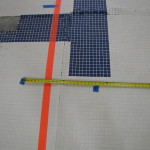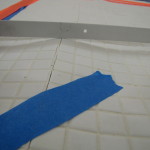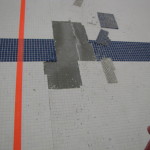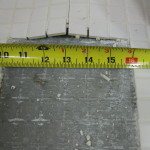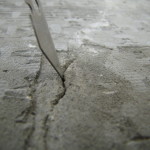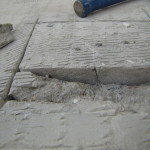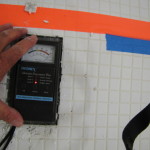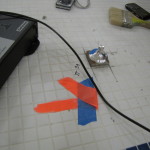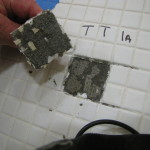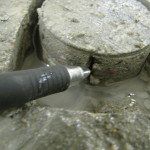No products in the cart.
Case Study
Investigation of Olympic Swimming Pool Tenting Tile
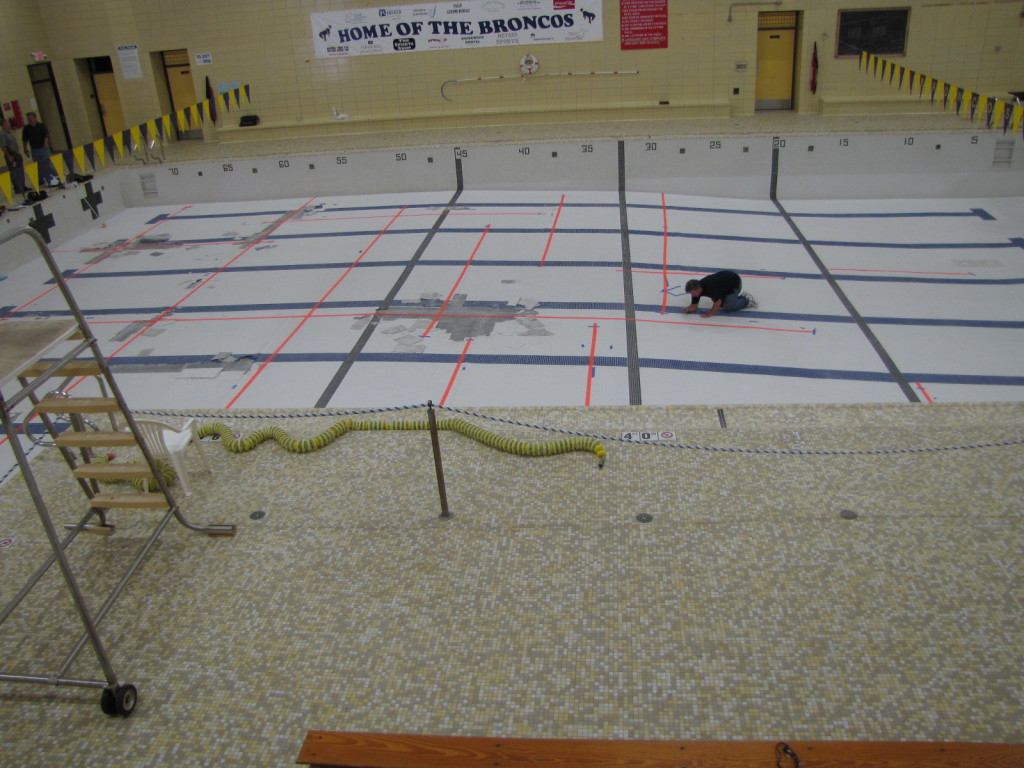
The Problem
Investigation of Olympic Swimming Pool Tenting Tiles Background: A school's Olympic swimming pool had the bottom of its pool deepened in order to meet regulations requirements. It originally had a 1" x 1" unglazed tile installed on the floors and walls of the pool. The floor of the pool was removed and a new structural slab was poured. Their tile installer then installed the 1x1 inch back dot mounted unglazed tile mosaics over the new concrete slab. About two weeks after the tile was installed in the pool and the pool was filled with water, the tile began debonding and tenting. Request: CTaSC was asked to investigate and inspect the Olympic pool to determine the cause of the tenting and cracking, to determine the extent of the damages, to determine if the installation met industry standards, and to determine how best to remediate the problems.The Solution
Investigation Findings:- The floor of the pool had lines of buckled/tented tiles about every 4 to 16 feet in one of the directions, and about 16 to 20 feet in the other direction. The rows of tented tiles ran straight across the pool with the apex of the tented tiles at a grout joint.
- There was only one movement joint in the entire pool. It was located partially at the perimeter of the pool's floor where it transitions to the pool wall, and it was not continuous around the whole pool perimeter.
- In many of the tented areas where the tile had been removed there were white streaks on the concrete where the tile had been installed. The white substance appeared to be efflorescence. In most cases there was a shrinkage crack underneath the white streak, which had thin-set embedded within it indicating it pre-existed prior to the tile installation.
- Some tiles at the apex or near the apex of the tenting were spalled or chipped at the edges, which suggests that area of the tile had been subjected to compressive stresses.
- Approximately 70% of the tile pool floor and walls were sounded with a DDT sounding device following the ASTM D4580 test protocol.
- About 30% of the pool floor tile sounded hollow and these hollow sounding areas were at, and adjacent or near to, where the tile had tented and was obviously debonded.
- The pool substrate was surveyed with a Tramex Encounter Plus electric moisture meter. The relative readings were from mid-range to marginally high.
- The tiles within about 8 to 18 inches of the span of the tented apex were either not bonded or poorly bonded and were easy to remove. The failure of what was bonded appeared to have failed cohesively within the thin-set mortar adhesive.
- To determine how well bonded the solid sounding tiles were, we performed a tensile pull test using a PosiTest AT-A Automatic Adhesion Tester by DeFeisko following the ASTM D4541/D7234 tensile pull test protocol.
- The tensile pull test was only performed on solid sounding tiles.
- Out of the 14 tests performed the test results ranged from 326 psi to 42 psi, with an average value of 185 psi.
- Eight cores were removed from various areas of the pool floor.
- The tiles came loose during the coring removal process in the areas where there were hollow tile. Where the cores were removed over a cracked substrate location, the crack did continue down into the concrete slab. In the solid tile sounding areas where the cores were removed there were no signs of cracks in the concrete.
- During the inspection, we removed a tented tile area that was approximately 6 tiles wide. The tiles were measured and were the same size as the tiles installed in the solid sounding areas. The grout joints with the ridged plastic dots holding the tiles in place were the same size and had not expanded or compressed. When we attempted to place this section of tile back into the same area it came out of, it did not fit. The space was about 1/8 of an inch smaller than the span of the original tile section that had originally been installed in that spot.
- The architect's report indicated that the tile was installed over the new concrete floor 14 days after it was poured. The concrete report stated the concrete had been over watered.
- The primary deficiency that caused the pool tile to debond and tent was that the new concrete floor was not allowed to cure for at least 28 days to allow it to achieve most of its significant shrinkage and strength before the tile was adhered to it. Further compounding that is the concrete was over watered, which caused excessive shrinkage.
- Further compounding the problem was that there were not adequate movement joints in the tile work.
- The concrete actually shrunk about 2 inches over the length of the pool, which caused the tiles to lose bond and tent up.
- The tile in the pool could have been repaired without removing all of the tile on the pool floor. Because the solid sounding portion of tiles tested out to have an average tensile bond strength of 185 psi, it demonstrated that those tiles were tenaciously attached.
- After removing the hollow sounding tiles, at and adjacent to the tented areas, that span of tile could have been replaced in a manner that would compensated for the 1/8" shrinkage in those spans and would not be noticeable.
- Movement joints could have been installed into the tile assembly within the 1/8" wide grout joints every 4 feet and at the perimeters to relieve any pent up stress or future stress.

